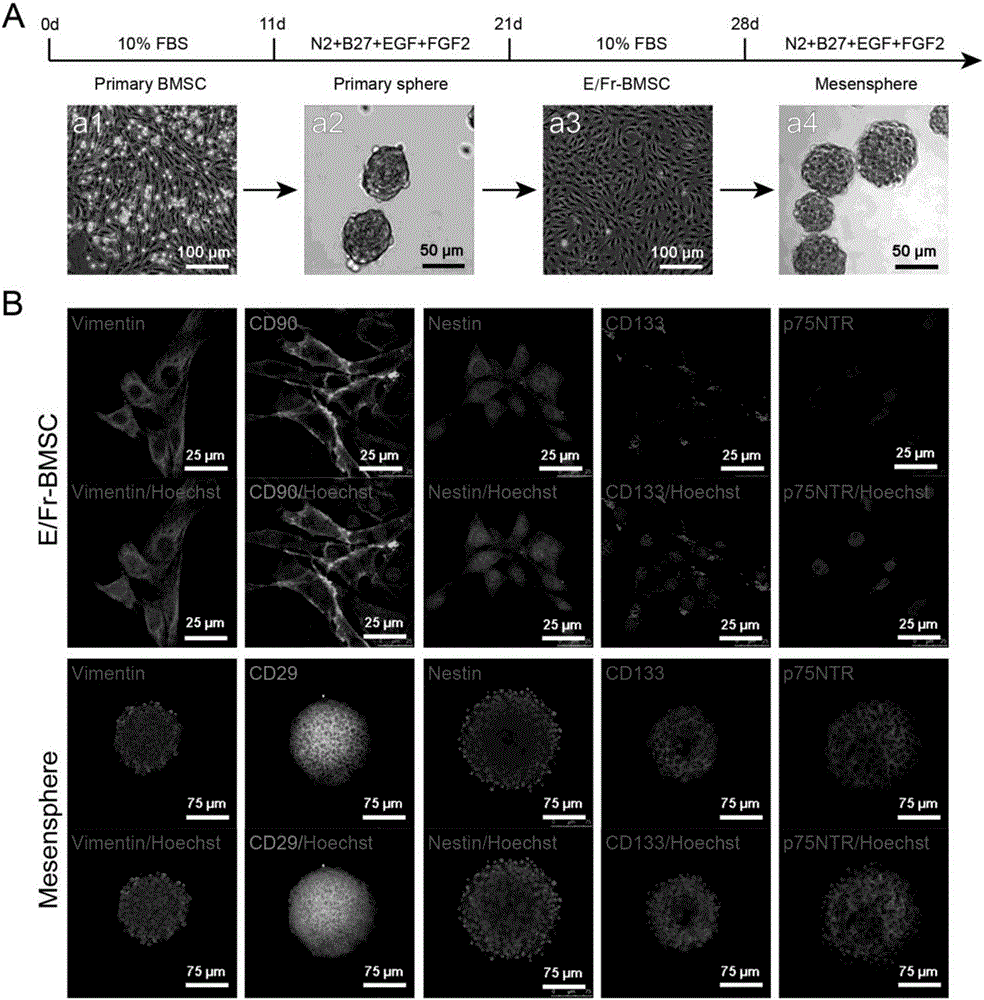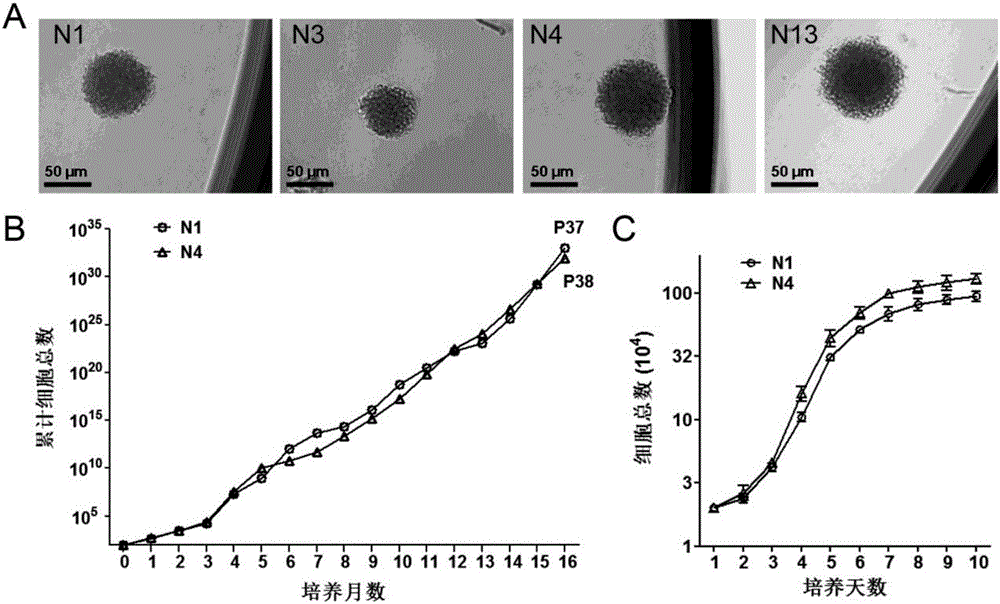Schwarm progenitor cell derived from marrow neural crest cell and application of Schwarm progenitor cell to promotion of nerve regeneration
A nerve regeneration and neural crest technology, applied in the field of tissue engineering, can solve problems such as limited application
- Summary
- Abstract
- Description
- Claims
- Application Information
AI Technical Summary
Problems solved by technology
Method used
Image
Examples
Embodiment 1
[0044] Example 1. Culture and identification of bone marrow neural crest cells (BM-NCC)
[0045] For the cultivation of BM-NCC, the following repeated two-step conditional culture procedure was applied to obtain BM-NCC:
[0046] In the first step, after adult Wistar rats (8 weeks old) were sacrificed, the bone marrow was washed out from the tibia and femur immediately, and the bone marrow cells were inoculated and cultured in IMDM medium containing 10% FBS, and BMSCs were grown on plastic culture dishes. Characteristics, repeated medium changes to remove floating hematopoietic stem cells, and primary rat BMSCs were isolated and cultured;
[0047] The second step, with 20ng / ml EGF, 20ng / ml FGF2, 1% N2 (v / v), 2% B27 (v / v)), 2mM glutamine, 100U / ml penicillin, 0.1mg / ml chain Mycin DMEM / F12 (v / v, 1:1) ball culture medium, the primary BMSCs were cultured into balls, and the seeding cell density was 2~3×10 5 cells / ml to form primary cell spheres (Sphere). The sphere culture medium...
Embodiment 2
[0054] Example 2.Isolation and proliferation of BM-NCC clones and detection of cell markers
[0055] BM-NCC clones were obtained by limited dilution method [Glejzer A, Laudet E, Leprince P, Hennuy B, Poulet C, Shakhova O, et al. Wnt1 and BMP2: two factors recruiting multipotent neural crest progenitors isolated from adult bone marrow. Cell Mol LifeSci .2011;68:2101-14.]. After the cell spheres were subcultured to the fourth generation or above, the cell spheres were digested into a single cell suspension with accutase enzyme, and the cells were inoculated into 96-well cell culture plates at a density of 0.7 cells / well for single-cell sphere culture (cells per well The number is random as 0, 1 or 2, etc.), and half the amount of medium is changed twice a week. Observe the cells in each well with a microscope. When the number of cells in a single cell sphere formed by the proliferation of a single cell reaches more than 100, the cell sphere is digested into a single-cell suspen...
Embodiment 3
[0060] Embodiment 3.BM-NCC directed differentiation to Schwann cell (SC)
[0061] BM-NCC monoclonal cells (N1, N3, N4 and N13) were induced to differentiate into SC by using specific differentiation medium.
[0062] The isolated cell clones were separated into single cells at passages P5-P7, and inoculated on small round glass slides coated with PLL / laminin, treated with 5% FBS, 35ng / ml tRA, 5μM forskolin, 200ng / ml HRG -1β, 10ng / ml FGF2, 10ng / ml PDGF-AA and 1% N2 in DMEM / F12 (v / v, 1:1) culture solution (i.e. SC directional induction differentiation medium) for incubation, and change the medium every 3 days .
[0063] After N1 cells were induced to differentiate for 12 h, the adherent cells began to elongate, and the cell shape changed from round to spindle ( Figure 5 A); 48h later, the spindle-shaped cells were arranged side by side ( Figure 5 B); After 60 h, the cells gradually aged and died. The cells induced for 48 hours were selected for ICC staining of S100β to conf...
PUM
 Login to View More
Login to View More Abstract
Description
Claims
Application Information
 Login to View More
Login to View More - R&D
- Intellectual Property
- Life Sciences
- Materials
- Tech Scout
- Unparalleled Data Quality
- Higher Quality Content
- 60% Fewer Hallucinations
Browse by: Latest US Patents, China's latest patents, Technical Efficacy Thesaurus, Application Domain, Technology Topic, Popular Technical Reports.
© 2025 PatSnap. All rights reserved.Legal|Privacy policy|Modern Slavery Act Transparency Statement|Sitemap|About US| Contact US: help@patsnap.com



